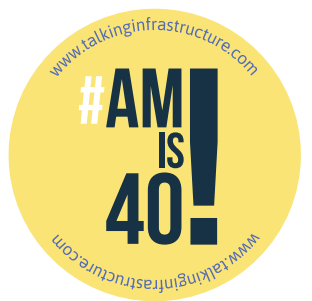
Come and meet Penny and Talking Infrastructure in person! Watch this space for additional details, but here’s the programme so far:
April 15 & 16 AMPeak, Adelaide. Penny and Ruth will be at AMPeak.
April 18, Stantec, Brisbane
April 19, PACoG, Brisbane. Asset Institute, QUT, 11am- 12.30, followed by lunch. Join Joe Mathew and Kerry McGivern along with Penny and Ruth to discuss what we’ve learnt in 40 years – and look forward to the next 40. Includes a look of what is happening with asset management internationally, in this big year for AM.
April 23, Blue Mountains City Council, Katoomba, 10am to noon. Seminar with Jeff Roorda on Blue Mountains City Council planetary health and disaster recovery experience, plus update on the new advocacy project underway by IPWEA Roads and Transport Directorate (IPWEA RTD – NSW/ACT), on Lessons Learned from Disaster Recovery, to assist NSW Councils work with Local, Strate and Federal Government Agencies.
April 24, Sydney event, Dawes Point. 6-10pm Harbour View Hotel, 18 Lower Fort Street, Dawes Point, NSW 2000. Using the recent experiences of the Blue Mountains City Council, Talking Infrastructure is holding an event in central Sydney to call for urgent changes in all of our asset mindsets and tools to ensure planetary health, biodiversity and climate change resilience. Meet with Penny, Jeff, Gregory and Ruth, plus local IPWEA. Food provided thanks to AMCL.
April 30, IPWE, Melbourne. Presentation by Penny. Penny and Ruth will be at IPWE until May 3. There will also be a dinner out in Melbourne for TI friends and colleagues – please let us know if you would like to join us. And bring along your copy of Penny’s book to get signed!
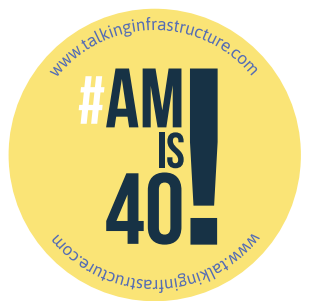
If you are planning to attend our Sydney celebration, please RSVP to: amis40@talkinginfrastructure.com so we can keep an eye on numbers – limited to the first 60! Event is free, includes food and discussion with Penny Burns and Jeff Roorda and a whole heap of old friends and colleagues.
Full update of the 40th year celebration events shortly!
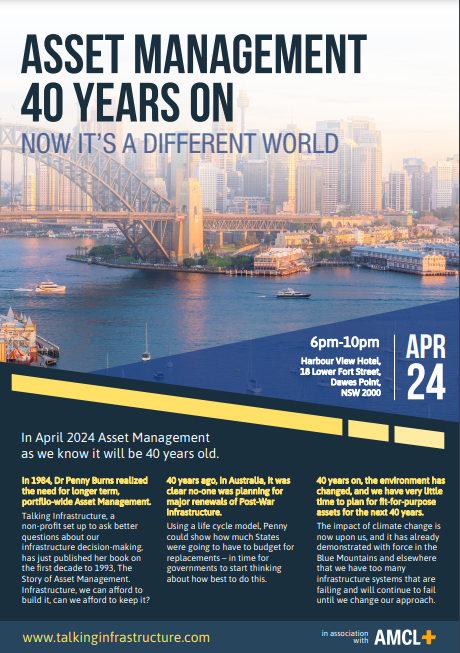
Join us at the Harbour View Hotel in the Rocks and help celebrate with finger food and drinks – plus Penny and Jeff on what we have learnt from the last 40 years to help us meet the challenges of the next 40.
Many thanks to Richard Edwards, Lynn Furniss and Matt Miles of AMCL
Today we uploaded Part 4 of this serial. See what is available – and come back next week for more.
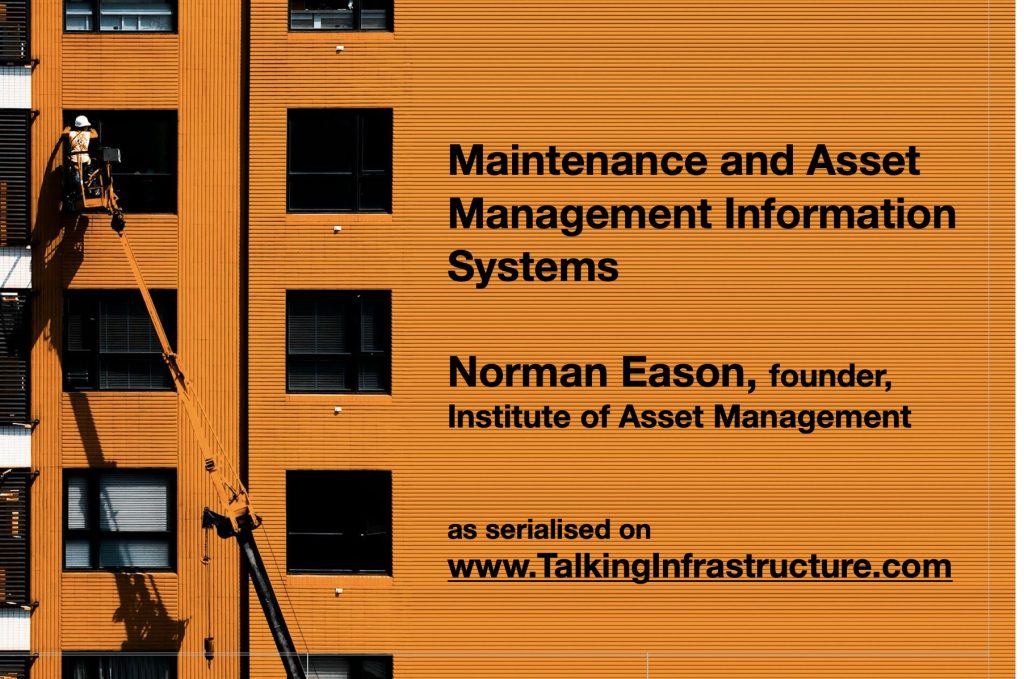
CONTENTS
Chapter 1, p.01 Scope of this book – what’s in it and what’s not
Chapter 2, p.12 Maintenance and Asset Management – the difference between them
Chapter 3, p. 22 Data and Information, Pt 1 – not the technology but the use
Chapter 3, p. 35 Data and Information, Pt 2 – differing needs of Maintenance and Asset Manaagement
Chapter 4, p.45 Objectives of Maintenance and Asset Management Systems – differences due to the attitudes of company management and maintenance operations
Chapter 5, p.58 The nature of the problem – and the problem of lock-in
Chapter 6, p.71 Codes – the way an organisation describes itself in an information system
Chapter 7, p.83 Functions – how to ensure the functions you need are fhe functions you get
Chapter 8, p.87 Technology – trends to be aware of
Chapter 9, p.99 Culture – a new and different framework for thinking about information systems
Part Five
Chapter 10, p.110 Evolution – when does the implementation of a new system end?
Chapter 11, p.120 Interconnection – maintenance systems are not the first to be computerised
Chapter 12, p.130 Methodologies – with the maturity of methodology comes a new are of divergence
Chapter 13, p.135 Traditional approach to product development – evolution v revolution
Part Six
Chapter 14, p.142 Successful procurement for through-life effectiveness – 5 areas that need to be addressed
Part Seven
Chapter 15, p. 172 Objective assessment of progress – productivity is the act of bringing a company closer to its goals.

Penny Burns and Talking Infrastructure will be on the move in April to celebrate 40 years of Asset Management, and look forward to the next 40.
Adelaide April 15 & 16, Penny and Ruth will be celebrating at AM Peak.
Brisbane events April 17-19
Sydney April 24, venue TBC: Asset Valuation in a time of Climate Crisis. Including Jeff Roorda on how Blue Mountains City Council is taking a radically new approach, as well as Penny on how we must rethink our AMP modelling.
Melbourne April 30, IPWC. Penny speaking on the opening morning of IPWEA conference
Wellington May 4-6, events to be announced
Let us know if you are interested in meeting up in any of these cities.
See you in April! #AMis40

Nobody likes being told what to do. So ‘Maintenance and Asset Management Information Systems’ doesn’t. Norman Eason’s vast experience and insightful observations will simply help you think it out for yourself! Much more enjoyable.
Part 2 of our serialisation of Norman Eason’s ‘Maintenance and Asset Management Information Systems’ addresses the problem of data into information.
My own experience – and I suspect yours also – is that when data storage became so cheap as to be ignored, we also tended to ignore data relevance. Early tendencies were to collect whatever we could – and figure out its use later. Are we still doing this?
Are you really sure?
Why not check? In Part 2 of Norman’s book, now available on the Talking Infrastructure website, Norman addresses the practical needs of both maintenance AND asset management – and makes a clear distinction between the two.
His work is easy, and it is fun to read.

Norman Eason, founder UK IAM, was not only an information systems innovator but a business strategist. Great combination!
We are now serialising Norman Eason’s major work “Maintenance and Asset Management Systems” and chapters 1-3 are already available. Don’t miss this.
I first met Norman in 1996 and later interviewed him for Strategic Asset Management when he visited Australia in 2000. In 2002, he came to Heathrow airport to see me off and gave me the manuscript of this work to edit and use ‘as I saw fit’. I felt enormously privileged to be entrusted with this work. So I did a light edit and in 2004 I published it, serial fashion, with side annotations, a chapter a week on my original website.
In the twenty years that then passed, that website was closed and I lost the original. It was only after he died, and thanks to my friends, Geoff Webb, who had printed out the entire thing as it was being published and sent me his hard copy, and Kerry McGovern, who patiently scanned the whole thing for me, that I again have a copy that I can share with the Asset Management Community.
Re-reading this work now makes me even more appreciative of Norman’s insight. For example, even some 30 years ago, when many were still thinking that asset management was simply ‘maintenance plus’ he was urging his readers to consider that:
‘movement from a traditional maintenance operation to asset management will take much more than the procurement of an asset management information system; it requires a fundamental change in culture that could take years to achieve. Indeed, the procurement of an asset management information system by a traditional maintenance operation without an accompanying change in culture could have a negative, rather than a positive, effect on the organisation’.
This is a message which is as relevant today as it was then. So don’t miss our serialisation of Norman’s work. It seems appropriate that after 20 years, we again make this available – and in the original web format. So enjoy!
Chapters 1-3 are available now.

Don’t be! Today we start a new serialisation of “Maintenance and Asset Management Information Systems” by Norman Eason, founder of the UK Institute of Asset Management whose ideas are as useful now as when he wrote them when Asset Management was at its beginning.
See Chapters 1-3 Here.
Norman Eason died two years ago today, February 24th. Not only was he the founder and first president of the UK Institute of Asset Management, he was the most innovative thinker of his time on the subject of information systems. He was one of the earliest to apply computer technology to maintenance and his Rapier system won a European Award in the early ’90s.
When he realised that companies were buying computerised maintenance systems without having a maintenance strategy and without linking their information requirements to their business, he decided it was time to address this serious issue, which led to his lobbying and the founding of the IAM in the UK in 1995 of which he was their first President.
It also led to his writing one of the most interesting books on maintenance and asset management information systems you will ever read.
In 2002 he gave me the manuscript of this work and asked me to do with it whatever I could as he now wished to spend his time in his garden. So I lightly edited it and, in 2004, I serialised it on the amqi.com website but did not keep it permanently available in case he should change his mind and decide to have it professionally edited and published. But he never did. Which is a pity since it is such a valuable work.
It was his view that the reason for procurement of an information system for maintenance or asset management is to make use of the information that it accrues. Pretty basic, but there are signs that some have forgotten what should be obvious
“The system should be a fundamental part of the Data to Wisdom Ladder – Data, Information, Knowledge, Wisdom – and the choice of the system will determine its effectiveness. Without an awareness of how data and information interact and how best they can be managed, no system will be effective. Chapter 3 addresses this subject and also introduces the concept of data as an asset, whereby users of information systems are encouraged to view data (and information) as valuable company assets that should be managed in a similar way to all other corporately important assets”
Read the first three chapters now.

One of my great pleasures in life is to sit in a café and talk infrastructure. A popular topic, even before Lou Cripps came up with the idea Asset Managers are platypuses, is what makes an effective one? Or even what attracts us in the first place.
Who are ‘our people’?
To defend us from accusations of exclusivity, I need to point out that it’s not about what you studied at university, or which country you grew up in. Good Asset Managers are ‘anywheres’, as Ark Wingrove put it.
This is, of course, a Serious Subject, as we desperately seek to switch to a future-friendly mindset; seeing the bigger, longer picture around physical assets. But it’s also kinda fun to think about the difference that makes a difference.
Like the AM team who came on one of my courses and took me literally. We teach whole life costs, cost-risk optimisation, thinking in risk, and how information is all about decision-making. But I don’t think most attendees go away and start actually doing any of that. This team did.
One reason people don’t try whole life cost modelling, or risks in $, is because they think it’s too hard before they even start.
But my best students – well, if that was how you do Asset Management, they would figure out how to do it. When I later asked Todd Sheperd how they quantified asset risk, he said he looked it up on the internet. After reading a recommended book and going on a recommended course. (As I said, he took me literally.)
Yes, he must have had the confidence to believe he and his team could figure it out. But I think it’s more than that. It’s about curiosity and openness to learning.
It also involves a belief that if I don’t know something, someone else may have worked it out, maybe in a completely different context. We can learn from others – like 17th century gambling mathematicians, or stock markets traders.
Or actuaries. It’s as if 99% of attendees on AM courses have never heard there is a whole profession who have worked out how to put $ on risks.
Sitting in a café recently with Todd and Julie DeYoung talking about infrastructure, we also recognised another quality: interest in what we can learn from people doing something that’s not exactly the same as what we’re trying to do. Like wondering what we can learn from assets that aren’t exactly what we have – instead of deciding ‘our’ assets are so special there is nothing we can learn from others (and the processes of AM planning and modelling don’t apply to us).
In other cafés years ago with another old AM friend, Christine Ashton, we thought it’s about pattern matching. About looking at a problem we had, and the kind of technology approach it needed, as opposed to a fixation on a particular software tool, for example. What kind of problem is it? What sort of tool could help?
To me that’s linked to 80:20 thinking, but I suspect that some of my best AM buddies are better at details than me. It’s happily straying into the unknown, instead of trying to force everything to fit into what you already know.
I love (nearly) all of my students, of course. But not all of them turn out to be my sort of café people.
Shout out to yet another recent café and Janel Ulrich – her of the ‘can we develop our SAMP in the next 12 hours?’ (yes, of course we can). I love the way she loves ‘our kind of people’, in all our quirks and heartaches and irrepressible openness.
Others who will recognise their café contributions include John Lavan and Manjit Bains. And Penny, with whom too many of these café conversations have to be virtual.
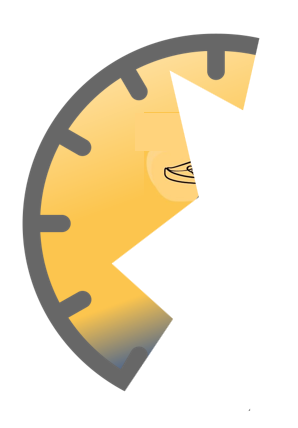
Someone I work with in the UK nuclear industry asks in despair, how come project engineers don’t feel that the whole point of building something is for it to operate? In other words, that construction projects only exist to create something that will be used to deliver products and services.
Why aren’t they interested in the long-term use that comes after construction?
If it really is all about use, they really need to consider what is required to use the asset. They should be interested!
This isn’t just to focus on what service we need to deliver. The asset has no point unless it delivers a service that is needed. Even project engineers can get that.
What we continue to struggle with is getting asset construction engineers and project managers to consider what is needed in order to use it successfully. And this includes providing as-built data – what assets are there to operate – and thinking ahead on operating strategy, and maintenance schedules. It’s designing and building with the operations and maintenance in mind. Designing for operability and maintainability.
In infrastructure, the asset ‘users’ are often not the customers, who may never touch or even see the assets. The people who use the assets are the operators; the people who touch the assets, maintenance.
An engineering design goes through many hands before it impacts on the customer – and if those hands in between are hamstrung by designs that are poor to operate, hard to maintain, and by the incomplete thinking that ‘throws the assets over the wall’ at operations (as we used to say in the UK) without adequate information – what is the point, really?
I believe there may be something called project time, where there is no ‘after’. No ‘and then what?’ – just onto the next shiny thing to build.

Recent Comments